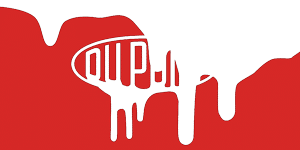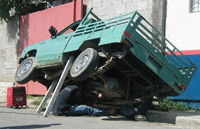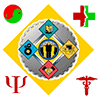
Transformational Safety and BBS
safety
Transformational Safety® recognizes the place of behavioral safety within the repertoire of tools to make our workplaces safer. It is for this reason that we have developed the service of Behavior Focused Cultural Mapping. In other words we are able to assess the safety culture of an organisation with special reference to the implementation and application of effective behavioral systems. By mapping the culture we are then able to customize interventions that serve to fill any transformational safety cultural gaps. We believe this is the key to sustained behavioral outcomes.
The popularity of the behavioural approach stems in part from the widely held view that “human factors” are the primary cause of the great majority of accidents. A conclusion which is frequently drawn from this observation is that the focus of accident prevention efforts needs to be shifted from engineering solutions to ensuring compliance with safe work practices.
 This is the basis of the infamous DuPont approach. Those responsible for developing the DuPont system assert strenuously that it is far more than a simple behaviour modification system, yet its emphasis is undeniably on behaviour modification and that is how it is understood by many of its advocates as well as its critics.
This is the basis of the infamous DuPont approach. Those responsible for developing the DuPont system assert strenuously that it is far more than a simple behaviour modification system, yet its emphasis is undeniably on behaviour modification and that is how it is understood by many of its advocates as well as its critics.
There is a basic fallacy in concluding that because the great majority of accidents are the result of human factors, in particular unsafe behaviour, the sole solution is to try to modify this behaviour. The fallacy is the presumption that accidents have a single or a primary cause; often referred to as mono-causality. This is the most dangerous thinking that can exist inside a business!
Modern accident analysis proceeds on the opposite assumption, that there is a potentially infinite network of causes which contribute to an accident, and if those causes had taken a different path, the accident would probably not have occurred. What this means is that while unsafe behaviour may appear to have triggered the accident, that unsafe behaviour is better viewed as something requiring explanation, rather than itself an explanation. The moment we begin to ask why the behaviour occurred we move back along various causal chains which invariably implicate, in some way, local cultural factors. Just as the great majority of accidents might be attributed to unsafe behaviour by front line workers, the great majority of accidents are at the same time attributable to actions or inactions by others (cognitive behaviours).
All manner of both external and internal pressures routinely lie behind unsafe actions taken by workers. Despite all the rhetoric about putting safety first, the reported experience of many workers, not all, is that when “push comes to shove”, production takes precedence over safety.
 All of the factors that contribute to “at-risk” behaviours therefore need to be identified and addressed for them to be effectively managed. It is for these reasons that Transformational Safety® approach is not to deny the existence of risk in the workplace. Just as we all take numerous risks from the moment we arise in the morning just to arrive at work, it is unrealistic to then not give direct attention to the constructs of risk within a workplace system. We are amongst the first to utilise the tools associated with Operational Risk Management (ORM) in the Australian workplace context. Our ORM resources have been sourced from the United States Military.
All of the factors that contribute to “at-risk” behaviours therefore need to be identified and addressed for them to be effectively managed. It is for these reasons that Transformational Safety® approach is not to deny the existence of risk in the workplace. Just as we all take numerous risks from the moment we arise in the morning just to arrive at work, it is unrealistic to then not give direct attention to the constructs of risk within a workplace system. We are amongst the first to utilise the tools associated with Operational Risk Management (ORM) in the Australian workplace context. Our ORM resources have been sourced from the United States Military.
There are many organizations that highlight significant risks that occur as a direct consequnce of the BBS approach to Safety. Transformational Safety shares many of those concerns. If you would like to see what Amerisafe has to say about BBS just click here. If you would like to read my colleague Andrew Hopkins view toward Behavior Based Safety (BBS) then click here. Andrew and I share the same philosophy here – when things go wrong we should actually be looking up (toward leadership) and not looking down (toward frontline workers). Click here to read some of the elements felt to underpin BBS.
What the Transformational Safety® Culture Improvement System does, is to examine and identify those specific underlying perceptions and attitudes which contribute to poor and/or unacceptable management of risk. Having established these attitudes, it responds by developing targeted tools and training to develop a culture of safe risk application and risk management in consultation with the organisation. What this means is that we do not, and will not, just provide “off the shelf” tools that require your operation to reengineer itself. These types of intervention invariably are very difficult to sustain and are prone to system failure. The reason they invariably fail is that they are externally imposed rather than internally developmentally evolved. where the impacts of poor risk outcomes are generally quite severe.
What we aim to achieve is in partnership with out clients develop and adapt proven techniques to seamlessly involve themselves within pre-existing systems. Whilst this is not always possible it always remains our preferred option. Transformational Safety® is primarily interested in developing a suite of psycho-behavioural interventions that compliment your current systems and practices.
“Most organizations operate in failure states and that just remains invisible because bad stuff is not happening. We might call that the ‘normalization of deviance’ and, make no mistake, it will kill.”

Ricky, Atlanta
![]()
“I was fortunate to attend Transformational Safety’s Anatomies of Disaster Program. This was amongst the most powerful two days I have ever spent in a room. From the outset David Broadbent set the scene by dedicating the program to the late Rick Rescorla – the man who is credited with saving over 2700 lives on 9/11. Throughout the two days David would often respectively reflect and remember those who had died, or been injured, in the disasters we explored. He would say, and I will never forget, “…we must always remember those that lost their lives lift us up into the light of understanding”. I learnt so much. HRO, Resilience Engineering, Critical Incident Stress Management (CISM) and more. Those of us who were there are still talking about it…… Thankyou David


